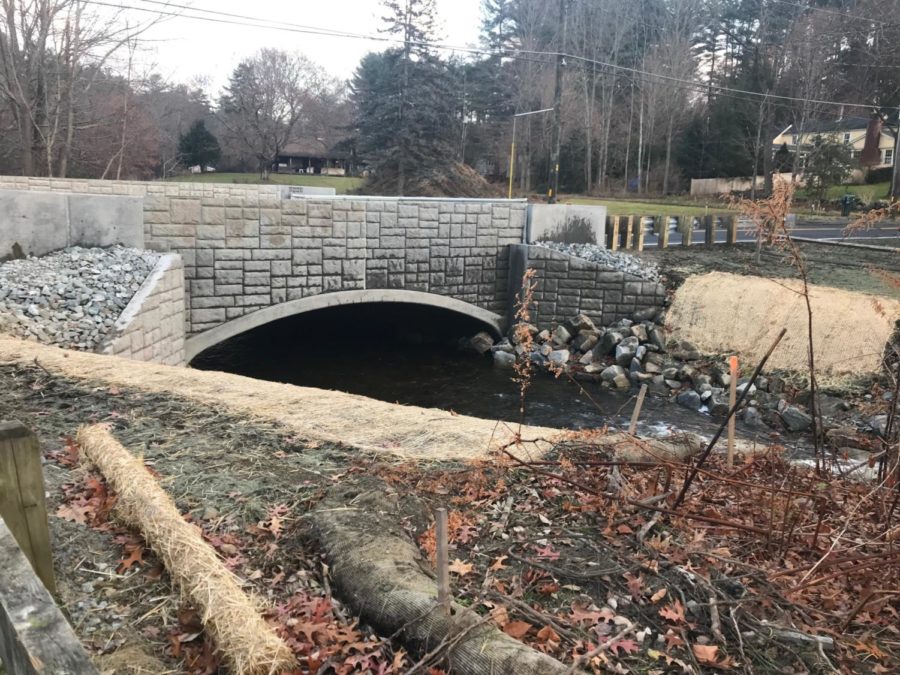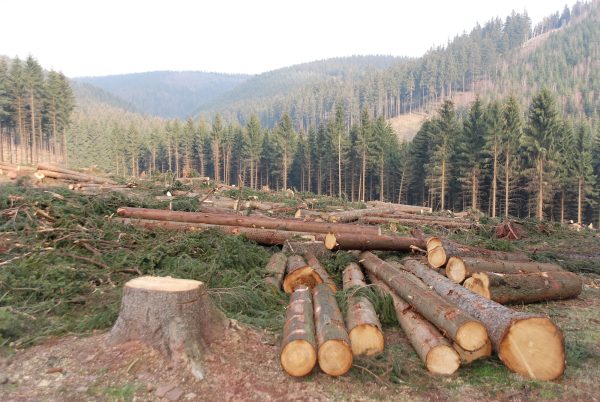Dutton Road Bridge Reopens Despite Multiple Construction Challenges
On December 1, 2021 the Dutton Road Bridge reopened for public use. Since late July 2021 the Sudbury bridge has been under construction for replacement. Dutton Road is a two-lane roadway that leads to Hudson Road and Wayside Inn Road. The bridge is located at the Hop Brook, crossing adjacent to one of Sudbury’s historical landmarks, the Stearns Mill Pond Dam. William O’Rourke, Deputy Director of Public Works and Town Engineer, has been the Town’s lead and coordinator for the project.
The bridge was originally constructed as twin stone masonry arch culverts about 120 years ago. Dutton Road was widened approximately 50 years ago but instead of lengthening the culverts with stone masonry, the town chose to utilize corrugated metal pipe arches. Alongside this bridge there was a secondary wooden decked steel stringer bridge for pedestrians use.
In 2017, a town-wide culvert evaluation program was initiated to examine the condition of 160 culverts since there had been little maintenance performed on them in recent years. A private consultant was hired and the Town’s survey team was utilized for the field work and data collection. The purpose of the program was to prioritize culvert repairs. Of these culverts, the Dutton Road culvert proved to be one of the culverts that was in need of urgent repair. Back in 2013, the town had a culvert failure of the same corrugated pipe material on Landham Road, which led to an emergency shut down, costly repair, and disruption to the community. O’Rourke said, “In order to avoid another emergency shut down, we decided to be proactive and apply for a $500,000 small bridge grant with MassDOT and rebuild the bridge on our schedule instead of an emergency schedule.” MassDOT considers any culverts that span wider than 10 feet to be a small bridge.
The culvert evaluation program determined the corrugated metal pipe sections of the Dutton Road Bridge were rotted out at the water line which placed this structure in the high priority category for replacement. Separately, the pedestrian bridge’s steel stringers were deteriorated and it was also in need of replacement.
During the course of the project there were a number of challenges that caused the project to be delayed:
The Town’s contractor hired a precast concrete manufacturer to construct the bridge off-site. The construction documents for the new precast arch bridge called for form liners on both sides of the bridge’s headwalls to give the concrete the appearance of natural stone. In the past the precast manufacturer had used form liners on one side of the headwalls but placing form liners on both sides on the headwalls was a challenge. They had never done this before and in order to meet the Town’s requirements they needed an additional two months to figure out the process. The project was originally scheduled to begin in late May 2021, but it finally was underway in late July.
Extensive rain over the summer from Hurricanes Henri, Ida and multiple unnamed storms posed another challenge during construction. Installation of the bridge abutments required excavation beneath the bottom of the brook. To complete the project, the water from Stearns Mill Pond had to be shut off in order to complete this task. The dam’s low-level outlet allowed for the pond level to be lowered and then closure of the outlet stopped water from entering the construction site for brief periods until the water built up and flowed over the spillway again. The process is called dewatering the construction site and it worked well until the heavy rains came. These heavy rains forced the job to be shut down periodically for about two weeks because the low-level outlet could not keep up with the watershed flows draining into the pond. O’Rourke said of the rains, “Water was coming through our job site and so we could not excavate down beneath the riverbed to install our abutments.” O’Rourke also adds that “It was very disappointing that he [the contractor] couldn’t work for periods of time because we had so much rain.”
The last delay challenge came at the end of the project when a reopening was soon anticipated. The contractor’s choice of guardrail subcontractor decided not to meet their obligation by not returning phone calls. The Town’s on-call guardrail contractor was able to step in and install the guardrail but not before another 2 weeks of delay.
During the bidding process, the project received a total of 14 bids for the work. As a result of such a competitive bidding process the Town had additional funds to remove the bypass channel of the original saw mill. Back in 1850, there was a saw mill, called Stearns Mill, that was located on the dam. Water would be diverted from Hop Brook for the sawing process and then bypass to a channel which ran under Dutton Road about 100 feet north of the bridge. This channel was known to few but was located where the Sudbury Water District’s water main came up out of the ground in an old wooden insulated box alongside Dutton Road. O’Rourke said of the bypass channel, “It was literally another small bridge 13-feet long under the road,” and later saying that it was a potential maintenance issue in the future. During construction, gravel and a new road bed replaced this channel and the water main was installed 5-feet below grade to eliminate possible freezing.
Now that construction of the bridge is complete and it is now open to the public, O’Rourke said that, “This bridge will probably last at least 50 years and perhaps much longer.” To avoid salt from deteriorating the condition of the bridge, the concrete must be treated each year.
O’Rourke said, “People were very good about being patient.” O’Rourke and the team delivered an aesthetically pleasing and structurally sound bridge despite the numerous challenges they faced. The anticipated wait is over for the opening of the bridge and pedestrians and vehicles are now able to cross.









Colton • Jan 4, 2022 at 2:50 pm
Excellent! Excellent!